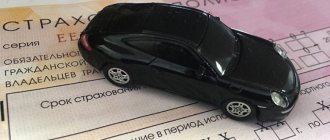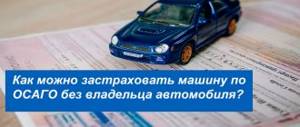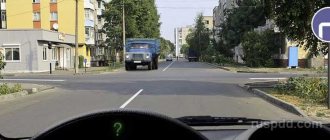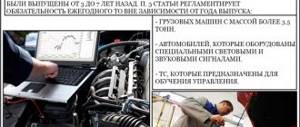Ivan and Sergey simultaneously purchased
MTPL (compulsory motor third party liability insurance) from the same insurance company. But Ivan’s insurance turned out to be almost 10 times more expensive than Sergei’s. We'll tell you why the cost of MTPL policies is different for everyone and how you can calculate it yourself in advance.
Insurance companies must calculate the cost of MTPL policies according to the rules approved by the Bank of Russia.
The cost of the policy is determined by a simple formula. It is necessary to multiply the base rate of the selected insurance company by coefficients that are individual for each client. They depend on the age and experience of the driver, vehicle characteristics, and region.
Basic rates from different insurers can vary by more than twice. But the coefficients that characterize the driver and the vehicle must be the same for all insurance companies.
Using these indicators, insurers assess the risk, whether you will be at fault for an accident, and the possible damage. The lower the risk for the insurer, the cheaper the policy will cost you.
How to calculate the cost of an MTPL policy yourself?
Find out what base rate the insurance company uses
Insurance companies determine an individual basic MTPL rate for each driver. But it must always remain within the tariff corridor established by the Bank of Russia.
The boundaries of the corridor depend on the type of vehicle and whether the vehicle is owned by an individual or a company. For example, for private owners of cars, the basic tariff should be in the range from 2471 to 5436 rubles. For motorcycle owners, the basic tariff is lower - from 625 to 1,548 rubles. Tariff corridors for other modes of transport and for legal entities can be found in the instructions of the Bank of Russia.
Each insurance company independently determines a set of factors that influence its basic rates. For example, it can set a maximum tariff for drivers who received fines for gross violations of traffic rules - running a red light, excessive speeding, driving into the oncoming lane. But these violations must be recorded by a traffic police inspector. That is, insurers do not take into account fines issued based on photographs from road surveillance cameras.
Insurance companies have the right to take into account other factors, for example, the education and marital status of the car owner, the make and even color of his car. The factors can be anything, but they must be based on the insurer's statistics on the number of accidents and the amount of payments for drivers and cars with different characteristics.
At the same time, insurance companies do not have the right to set the size of the basic tariff depending on the nationality, religion, political views and position of the car owner.
Each insurance company is required to publish on its website complete lists of factors that affect its basic rates and calculators for calculating the cost of a policy. Therefore, it makes sense to go to the websites of several insurers and compare their offers.
Look at the territory coefficient (CT)
This coefficient is related to the statistics of insurance payments in a particular region. Typically, the more cars on the road, the higher the likelihood that someone will collide with someone else. Therefore, insurance for residents of megacities, as a rule, is more expensive than for car owners in small cities or towns.
For example, for Moscow the territory coefficient is 1.9. And for villages in the Kostroma region – 0.73. All territorial coefficients can be viewed in the instructions on tariffs for compulsory motor liability insurance on the Bank of Russia website.
To calculate the territorial coefficient, the registration address indicated in your passport, vehicle registration certificate or PTS is used.
The insurer will not be able to use the coefficients at your actual residence address in calculations if you are not registered there.
For example, if you lived in Moscow and registered your car there, and then moved to Kostroma for a while, then the insurer will use the Moscow coefficient. Temporary registration is not reflected in the passport, which means the insurance company will not take it into account.
If you register in Kostroma, you will need to re-register the car at the traffic police department or. The license plate number of the car will not change.
Check the bonus-malus ratio (BMR)
KBM shows how careful you are while driving. If you were not the culprit of accidents during the year, then next year the BMR will be less and, at the same basic rate, the price of the policy will be lower (unless your BMR was already minimal - 0.5).
If, due to your negligence, an accident occurred and the insurance company was forced to pay money for them, then the cost of insurance will increase sharply (unless your BMR was previously the maximum - 2.45).
For example, if a driver just received a license and in the first year behind the wheel caused two accidents, then the next year his KBM will be 2.45. This may increase the cost of a new policy. And if a person has never been in an accident for 10 years after receiving a driver’s license, then he will be able to get a discount.
You can find out your KBM from the Russian Union of Auto Insurers (RUA). Insurance companies also receive information about KBM from the RSA database.
The KBM is assigned to the driver once a year – on April 1. And is valid until March 31 of the next year inclusive.
The KBM is assigned to the driver, not his car or motorcycle. That is, if you change the car, the KBM will not change.
If you have just received your license and are purchasing a policy for the first time, then you are automatically assigned a coefficient of 1. That is, you will have neither a discount for accident-free driving nor a premium for accidents.
If several drivers are included in the policy, then the largest BMR is used when calculating the price. Under agreements in which there is no limit on the number of drivers, the BMR will be equal to 1.
For example, a father and son drive the same car, while the father’s KBM is 0.7, and the son’s is 0.95. When the insurer issues a policy for this car, he will take a BMR of 0.95. That is, he will give them a 5% discount.
Knowing your current BMR and the number of accidents for which payments were made in the current year, you can estimate what the BMR will be next year.
If you were at fault for four or more accidents in the current year and there were insurance payments for them, next year your BMR will increase to 2.45. Even if before this you have driven for many years without accidents and received a large discount.
Consider the limitation factor (CR)
If all drivers who will drive the car are included in the policy, then the CO will be equal to 1.
You don’t have to include specific drivers in your policy. Then anyone with a valid license of the appropriate category will be able to drive the car, and the insurance will cover their liability. In this case, when calculating the price of the policy, a BMR equal to one will be used, but the limitation coefficient will be equal to 1.94.
For cars that belong to companies, the CO is 1.97.
Find out the age and experience coefficient (AIC)
Statistics show: the younger the age and experience of the driver, the more often he becomes the culprit of an accident. Because of this, insurance costs more for young and inexperienced drivers.
According to the rules for calculating the cost of policies, all drivers were divided into 58 groups - according to a combination of age and experience. And each group was assigned its own PIC. For example, for novice drivers who have not yet turned 22 years old and have less than 1 year of experience, the coefficient is the highest - 1.93. And motorists over 59 years of age with 14 years of driving experience have the lowest rate (0.9).
All age and experience coefficients
The insurer takes into account the length of service from the moment the driver’s license is issued. If you got your license five years ago, but drove for the first time this year, you will still be considered to have five years of driving experience.
The date of issue of the certificate is indicated on its front side. But if you changed your license, then you need to look at the back of the certificate - the date of issue of the previous license is indicated there.
When applying for an MTPL policy, you must use the date you received your very first driver’s license, if you changed it. Otherwise, the length of service and the captain will be calculated incorrectly..
If several people are included in the policy, then the FAC of the driver with the highest coefficient is used to calculate the price.
For example, a 50-year-old father who has been driving for 20 years (PIC - 0.93), a 20-year-old son with zero driving experience (PIC - 1.93) and a 75-year-old grandfather who turns the steering wheel are planning to drive one car. youth (KVS – 0.9). When issuing a policy, the insurance company uses a FAC of 1.93.
If you take out a policy without limiting the number of drivers, the FAC will be equal to one.
Calculate vehicle power factor (KP)
The engine power factor is used for passenger cars only. If you have, for example, a moped, a truck or a tractor, this coefficient is not used.
For passenger cars, KM depends on the number of engine horsepower, which is indicated in the passport or vehicle registration certificate. If only the power in kilowatts is written in the passport, it is recalculated using the formula: 1 kW/h = 1.35962 horsepower. If power is not mentioned at all in the documents, then insurers are obliged to take data from the catalogs of manufacturers.
The lowest coefficient (0.6) is assigned to small cars with power up to 50 horsepower. The highest (1.6) is for powerful cars with more than 150 “horses” under the hood.
There are a total of 6 gradations of vehicle power factor
Use the seasonality factor (KS) if the car is not needed all year round
If you drive a car, for example, only to the dacha in the summer, then you can save on compulsory motor insurance. You can specify the period of use of the car in the policy. The shorter this period, the lower the coefficient and the cheaper the insurance.
If you choose 3 months of use, the KS will be 0.5. That is, you will pay only half the price of an annual policy. If you plan to travel for six months, the coefficient will increase to 0.7 (30% discount). However, there will be no discount for taking out a policy for 10 and 11 months. In this case, the KS is equal to one, as for the whole year.
All seasonality coefficient values
Multiply the base tariff and all coefficients
Multiply all the above coefficients. And multiply the result by the base rate that the selected insurance company uses based on your characteristics.
Let’s assume that Ivan and Sergey contacted a company that charges the maximum tariff to persistent traffic violators and the minimum tariff to law-abiding drivers who have children.
Ivan loves to drive - he has a lot of fines for speeding. And Sergei drives carefully and carefully, including because he often takes his children to school and to clubs. The basic tariff for Ivan turned out to be 5,436 rubles, and for Sergei – 2,471 rubles.
Both of them live in Yaroslavl. But Ivan is registered in Moscow. The territorial coefficient (CT) for Moscow is 1.9, and for Yaroslavl – 1.45.
Ivan’s old insurance was calculated with a BMR of 0.95, but during the year one accident occurred due to his fault, which means that his BMR for the new policy increased to 1.4. Sergei drove for many years without accidents, and his BMR was at the level of 0.75, but this year he was also unlucky - he caused an accident, and his BMR was now 0.9.
Both drivers plan to include only themselves in the policy (KO – 1).
Ivan is 25 years old, his driving experience is 2 years (PIC - 1.61). Sergey is 30 years old, driving experience – 7 years (PIC – 1.01).
Ivan has a sports car with a power of 320 horsepower (KM - 1.6). Sergei has a passenger car with a capacity of 117 horsepower (KM - 1.2).
Both drive the entire code (KS – 1).
Let's multiply the base tariff and coefficients:
BT x CT x KBM x KO x KVS x KM x KS = price of a new policy.
Policy price for Ivan:
5436 x 1.9 x 1.4 x 1 x 1.61 x 1.6 x 1 = 37,248 rubles.
Policy price for Sergei:
2471 x 1.45 x 0.9 x 1 x 1.01 x 1.2 x 1 = 3908 rubles.
As a result, the insurance company’s calculations turned out to be correct and the policy cost Ivan almost 10 times more than Sergei.
What is the KM coefficient in OSAGO and where is it taken into account?
The calculation of the cost of compulsory motor liability insurance is based on a set of coefficients, the values of which are determined in accordance with Appendix No. 2 to the Directive of the Central Bank of the Russian Federation dated December 4, 2018 No. 5000-U. One of them is the power factor (PF).
So, by KM we mean the power of the car, converted into horsepower.
This indicator is taken into account when calculating the cost of the policy for vehicles of category B and BE (passenger cars).
My calculations did not coincide with the price that the insurer told me. What to do?
Your policy contains the line “Calculation of the insurance premium.” The insurer's base tariff and all coefficients are indicated there. Check if these numbers match yours. If not, ask a company representative to explain why these factors were chosen for the calculation.
Most often, errors occur when calculating PIC and CBM. This happens, for example, if you changed your driver's license. Or we bought MTPL policies from different companies, and they calculated the KBM only based on their data.
The insurer may mistakenly calculate your length of service from the moment your new license is issued. Then you will have a PIC as a novice driver. In this case, simply draw his attention to the date of registration of the first rights. This date is indicated on the back of the new certificate.
Problems often arise with KBM for the same reason. If you change your driving license, you must inform your insurer immediately. He will reissue the MTPL policy. The insurer will also transfer your data to the unified RSA database - there your new rights will be linked with the old ones.
The insurance will continue to be valid even if you forget to notify the insurance company about the replacement of your license. But if the traffic police decide to check your policy, problems may arise, since technically you will be violating.
If you changed your license during a period when you did not have an MTPL policy (you didn’t want to use the car for several months or even years), then do not forget to inform about the replacement of the certificate when you come to buy a new policy.
If you did not do this for some reason, the insurer will not transfer the information to the RSA. Your new ID will be unrelated to your previous insurance history. You will be listed as a new driver in the RSA database. And your CBM will become equal to one.
If this is discovered at the time of purchasing a new policy, ask the insurance company to update the information in the PCA database. And then, if you had a low BMR, you can get a discount on new insurance.
KM table
The value of the power factor is determined in accordance with the table reflected in clause 5 of Appendix No. 2 to the above-mentioned Directive of the Central Bank of the Russian Federation.
| No. | Vehicle power | KM value | |
| horsepower | kilowatts | ||
| 1 | up to 50 | up to 36.7 | 0,6 |
| 2 | 50-70 | 36,7-51,4 | 1 |
| 3 | 70-100 | 51,4-73,5 | 1,1 |
| 4 | 100-120 | 73,7-88,2 | 1,2 |
| 5 | 120-150 | 88,2-110,3 | 1,4 |
| 6 | More than 150 | More than 110.3 | 1,6 |










